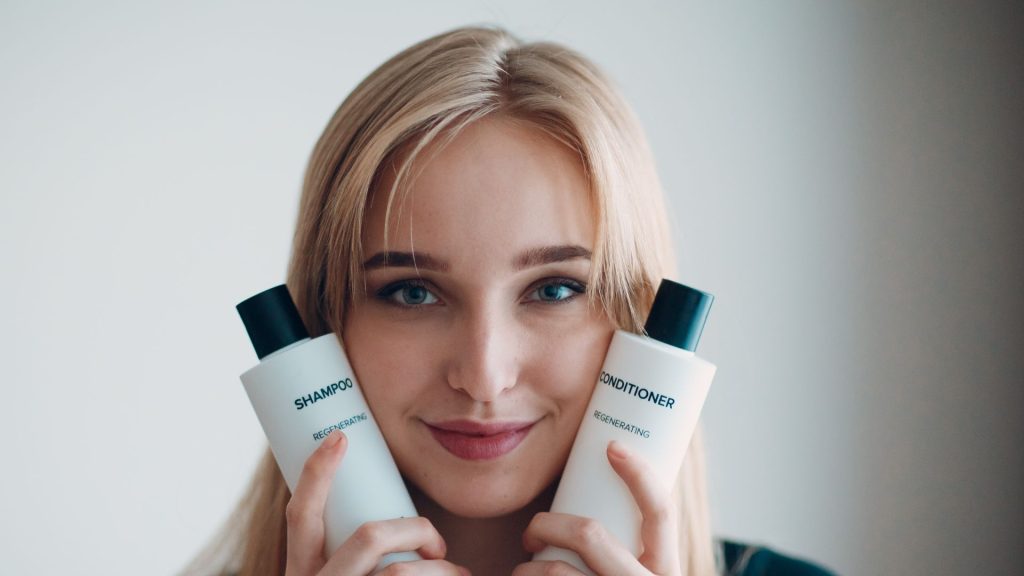Shampoos are viscous liquids designed to emulsify oil and dirt on your scalp and hair before being washed away with each rinse. Shampoos contain surfactants for cleansing purposes, fragrance to add an in-salon smell, as well as preservatives which protect from germs and decomposition.
Experts advise using conditioner regularly when taking a shower, and have suggested several different varieties suited to various hair needs.
Natural
Natural shampoos offer an alternative to synthetic products in terms of chemical content, while still supporting scalp health. Natural formulations often exclude parabens (an irritating preservative linked to sensitivities), formaldehyde, sodium lauryl sulfates or other ingredients known to contribute to coral reef death.
Sulfates, commonly found in commercial shampoos, can strip hair of its natural oils, leading to dryness. Many natural shampoos use ingredients such as sarsaparilla root extract, soap bark, or yucca to provide a comparable lather without using sulfates as surfactants.
Many people who switch to natural shampoos notice their hair has an adjustment period when switching, with excess oil production to compensate for its lack. This process could last from days, weeks or months depending on each individual; patience will help smooth this transition. Another difference with natural shampoos is they don’t lather up as much – this doesn’t indicate they aren’t cleaning your scalp and hair effectively!
Medicated
Medicated shampoos provide an effective means of clearing away dirt, oil and grime from both hair and scalp while treating specific scalp issues such as dandruff, itching or scalp psoriasis at their source. With medication such as ketoconazole, selenium sulfide and zinc pyrithione to reduce symptoms while helping prevent future outbreaks, medicated shampoos provide a solution.
Many medicated shampoos can be bought over-the-counter while others require a valid valid valid physician’s prescription. Some shampoos, such as zinc pyrithione shampoo for targeting dandruff, may even qualify for reimbursement through your health savings account, flexible spending account or employer sponsored healthcare plan with proof of medical necessity letters from these sources.
Many medicated shampoos contain harsh surfactants that remove the natural microbiome of skin and leave it vulnerable to infection, especially antifungal products designed to kill fungal pathogens – leaving scalp susceptible to further fungal growth despite medicated solution’s success. Other solutions such as ozone treatments or probiotic shampoos may help restore healthy balance by repairing damage done to microbiome balance and restore skin health.
Two-in-One
Two-in-one shampoos may seem like an efficient time saver, but they could actually do more damage to your locks than good. Shampoos clean away dirt and debris while simultaneously stripping natural oils from both scalp and hair follicles – leaving hair looking dry. Conditioners help restore these essential oils back in, moisturizing and strengthening hair for healthy growth.
Two-in-one products usually contain cationic surfactants like polyquaternium-10 and guar hydroxypropyltrimonium chloride, such as those found in Ashland’s N-Hance conditioning polymers (the latter of which will deposit onto hair with negative charges). When applied directly onto negatively charged locks, these positively charged polymers deposit on them forming a coating over them that ensures optimal conditions.
These formulations may also include moisturizers like shea butter, glycerin and oat peptide and extract to soothe the scalp and prevent dandruff. Some contain zinc pyrithione to combat it without overdrying hair and scalp. This unique blend of cleanser and conditioner is great for kids, dudes or whenever a gentle clean is necessary; its generous lather respects natural oils in hair and skin while leaving your strands soft and smooth with no sign of stripping!
Specialty
Shampoos are used primarily to cleanse sebum (natural oils) and other contaminants from hair and scalp, helping prevent issues like folliculitis or seborrheic dermatitis. Shampoos also eliminate sweat components, desquamated stratum corneum cells, styling products residue and environmental debris. Some shampoos even include hair conditioning agents to add an element of beautification while conditioners specialize in healing split ends (trichoptilosis).
Most modern shampoos utilize a blend of detergents in order to provide optimal cleaning levels for each hair type and need: oily, normal, dyed or permed. As primary cleansers, detergents such as lauryl sulfates or sulfosuccinates often make an appearance – these detergents have both lipophilic and hydrophilic sites which bind sebum for effective oily dirt removal.
Emollient shampoos contain ingredients designed to soften both hair and skin, such as fatty acid esters from coconut, palm, peanut, sesame or sesame seed oils; shea butter; cocoa butter; polyethylene glycol-4 dilaurate, glycerol, lecithin or methyl salicylate; these substances often create pearlescent sheen in hair.


